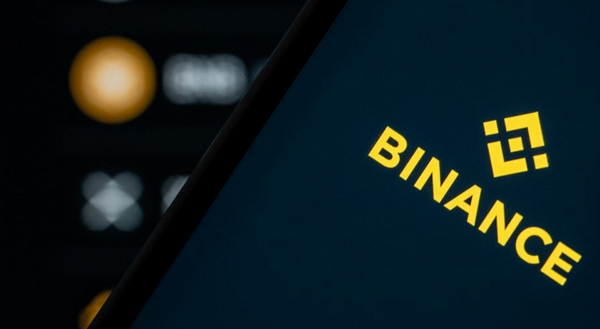-
 Bitcoin
Bitcoin $87,496.1345
2.83% -
 Ethereum
Ethereum $1,649.4006
2.40% -
 Tether USDt
Tether USDt $0.9999
0.01% -
 XRP
XRP $2.1353
2.56% -
 BNB
BNB $607.2800
2.10% -
 Solana
Solana $141.0218
0.03% -
 USDC
USDC $1.0000
0.03% -
 Dogecoin
Dogecoin $0.1619
1.70% -
 TRON
TRON $0.2443
0.54% -
 Cardano
Cardano $0.6452
2.26% -
 Chainlink
Chainlink $13.5841
4.04% -
 UNUS SED LEO
UNUS SED LEO $9.4089
0.67% -
 Avalanche
Avalanche $20.3134
2.09% -
 Stellar
Stellar $0.2551
3.56% -
 Toncoin
Toncoin $3.0369
1.01% -
 Shiba Inu
Shiba Inu $0.0...01275
2.97% -
 Sui
Sui $2.2408
3.95% -
 Hedera
Hedera $0.1723
3.90% -
 Bitcoin Cash
Bitcoin Cash $338.9415
0.21% -
 Polkadot
Polkadot $3.9455
0.38% -
 Hyperliquid
Hyperliquid $18.2240
0.51% -
 Litecoin
Litecoin $79.2370
3.24% -
 Bitget Token
Bitget Token $4.5277
-1.31% -
 Dai
Dai $0.9999
0.00% -
 Ethena USDe
Ethena USDe $0.9993
0.02% -
 Pi
Pi $0.6340
-1.23% -
 Monero
Monero $216.2114
-0.14% -
 Uniswap
Uniswap $5.4798
2.97% -
 Pepe
Pepe $0.0...07904
5.68% -
 Aptos
Aptos $5.1618
5.56%
What does Binance leverage trading mean
Leverage trading on Binance enables traders to enhance potential earnings by accessing borrowed funds from the exchange, provided they accept the heightened risk of financial losses.
Nov 17, 2024 at 06:39 pm

What Does Binance Leverage Trading Mean?
Binance leverage trading is a type of trading that allows users to borrow funds from the exchange in order to increase their potential profits. By using leverage, traders can amplify their buying power and potentially earn more money, but they also increase their risk of losing money.
Leverage is expressed as a ratio, such as 2x, 5x, or 10x. The higher the leverage, the more funds the trader can borrow. For example, a trader with 10x leverage can borrow up to 10 times their own funds.
Leverage trading is a powerful tool that can be used to make significant profits, but it is important to understand the risks involved. Traders should only use leverage if they are comfortable with the potential losses.
Here are some of the key things to keep in mind when using leverage trading on Binance:
- Set a clear trading plan and stick to it. This will help you to avoid making impulsive decisions that could lead to losses.
- Understand the volatility of the market. Trading with leverage can magnify both profits and losses, so it is important to have a good understanding of the risks involved.
- Manage your risk prudently. Leverage trading can increase your risk of losing money, so it is important to have a sound risk management strategy in place.
- Only trade with capital that you can afford to lose. Leverage trading can lead to significant losses, so it is important to only trade with capital that you are comfortable losing.
How to Use Leverage Trading on Binance
To use leverage trading on Binance, you will need to:
- Open a Binance account. You can create an account by visiting the Binance website and clicking on the "Register" button.
- Verify your identity. Binance requires all users to verify their identity before they can start trading. You can verify your identity by uploading a government-issued ID and a photo of yourself.
- Fund your account. You can fund your Binance account using a variety of methods, including cryptocurrency, wire transfer, or credit card.
- Enable leverage trading. To enable leverage trading, you will need to go to the "Account" tab and click on the "Enable Leverage" button.
- Choose a trading pair. Once you have enabled leverage trading, you can choose a trading pair to trade. Binance offers a wide range of trading pairs, including BTC/USDT, ETH/USDT, and BNB/USDT.
- Set your leverage. Once you have chosen a trading pair, you can set your leverage. The maximum leverage available on Binance is 125x for BTC/USDT and ETH/USDT.
- Place an order. Once you have set your leverage, you can place an order. You can place a market order, a limit order, or a stop order.
- Monitor your trade. Once you have placed an order, you should monitor your trade closely. You can monitor your trade by going to the "Orders" tab.
Risks of Leverage Trading
Leverage trading is a powerful tool, but it also carries a number of risks. These risks include:
- The risk of losing more money than you have. Leverage trading can magnify both profits and losses, so it is important to be aware that you could lose more money than you originally invested.
- The risk of liquidation. If the market moves against you when you are trading with leverage, your position could be liquidated. This means that you will be forced to sell your assets at a loss in order to cover your losses.
- The risk of margin calls. If your account balance falls below a certain level, you may receive a margin call from Binance. A margin call is a demand to add more funds to your account. If you do not meet the margin call, your position could be liquidated.
Tips for Beginners
If you are new to leverage trading, here are a few tips to help you get started:
- Start with a small amount of leverage. It is important to get a feel for the risks of leverage trading before you start using large amounts of leverage.
- Trade with a trusted exchange. Binance is a reputable exchange that offers a secure and reliable trading environment.
- Use a stop-loss order. A stop-loss order is an order that automatically sells your assets if the market moves against you. This can help to protect you from losses.
- Manage your risk prudently. Leverage trading can be a risky business, so it is important to manage your risk prudently. Only trade with capital that you can afford to lose.
- Educate yourself about leverage trading. There are a number of resources available to help you learn more about leverage trading. Make sure to do your research before you start trading.
Disclaimer:info@kdj.com
The information provided is not trading advice. kdj.com does not assume any responsibility for any investments made based on the information provided in this article. Cryptocurrencies are highly volatile and it is highly recommended that you invest with caution after thorough research!
If you believe that the content used on this website infringes your copyright, please contact us immediately (info@kdj.com) and we will delete it promptly.
- An Aptos community member submitted a proposal to slash staking rewards for the network's native token
- 2025-04-21 13:50:14
- The Ultimate Guide to BTFD Coin (BTFD): ROI Potential, Presale Stages, and More
- 2025-04-21 13:50:14
- TRON (TRX) Price Broke Above Descending Trendline Resistance Targeting $0.2800
- 2025-04-21 13:45:14
- VOXEL token price skyrockets by more than 50% after a BitGet malfunction causes the VOXE/USDT perpetual contract to surpass that of Bitcoin
- 2025-04-21 13:45:14
- Why Is Least Privilege Fundamental to Creating Safe Environments?
- 2025-04-21 13:40:14
- Top Crypto Gainers Today - JUP, WAVES, FXS, and DOT Are Outperforming the Market
- 2025-04-21 13:40:14
Related knowledge

How does Tail Protection reduce the loss of liquidation?
Apr 11,2025 at 01:50am
Introduction to Tail Protection in CryptocurrencyTail Protection is a mechanism designed to mitigate the risks associated with liquidation in cryptocurrency trading. Liquidation occurs when a trader's position is forcibly closed by the exchange due to insufficient margin to cover potential losses. This often happens in leveraged trading, where traders b...

What are the consequences of an imbalance in the long-short ratio?
Apr 13,2025 at 02:50pm
The long-short ratio is a critical metric in the cryptocurrency trading world, reflecting the balance between bullish and bearish sentiments among traders. An imbalance in this ratio can have significant consequences on the market dynamics, affecting everything from price volatility to trading strategies. Understanding these consequences is essential fo...

How to judge the market trend by the position volume?
Apr 11,2025 at 02:29pm
Understanding how to judge the market trend by position volume is crucial for any cryptocurrency trader. Position volume, which refers to the total number of open positions in a particular cryptocurrency, can provide valuable insights into market sentiment and potential price movements. By analyzing this data, traders can make more informed decisions ab...

Why does a perpetual contract have no expiration date?
Apr 09,2025 at 08:43pm
Perpetual contracts, also known as perpetual futures or perpetual swaps, are a type of derivative product that has gained significant popularity in the cryptocurrency market. Unlike traditional futures contracts, which have a fixed expiration date, perpetual contracts do not expire. This unique feature raises the question: why does a perpetual contract ...

Why is the full-position mode riskier than the position-by-position mode?
Apr 13,2025 at 03:42pm
Why is the Full-Position Mode Riskier Than the Position-by-Position Mode? In the world of cryptocurrency trading, the choice between full-position mode and position-by-position mode can significantly impact the risk profile of a trader's portfolio. Understanding the differences between these two modes is crucial for making informed trading decisions. Th...

How is the liquidation price calculated?
Apr 12,2025 at 01:35am
Introduction to Liquidation PriceLiquidation price is a critical concept in the world of cryptocurrency trading, particularly when dealing with leveraged positions. Understanding how this price is calculated is essential for traders to manage their risk effectively. The liquidation price is the point at which a trader's position is forcibly closed by th...

How does Tail Protection reduce the loss of liquidation?
Apr 11,2025 at 01:50am
Introduction to Tail Protection in CryptocurrencyTail Protection is a mechanism designed to mitigate the risks associated with liquidation in cryptocurrency trading. Liquidation occurs when a trader's position is forcibly closed by the exchange due to insufficient margin to cover potential losses. This often happens in leveraged trading, where traders b...

What are the consequences of an imbalance in the long-short ratio?
Apr 13,2025 at 02:50pm
The long-short ratio is a critical metric in the cryptocurrency trading world, reflecting the balance between bullish and bearish sentiments among traders. An imbalance in this ratio can have significant consequences on the market dynamics, affecting everything from price volatility to trading strategies. Understanding these consequences is essential fo...

How to judge the market trend by the position volume?
Apr 11,2025 at 02:29pm
Understanding how to judge the market trend by position volume is crucial for any cryptocurrency trader. Position volume, which refers to the total number of open positions in a particular cryptocurrency, can provide valuable insights into market sentiment and potential price movements. By analyzing this data, traders can make more informed decisions ab...

Why does a perpetual contract have no expiration date?
Apr 09,2025 at 08:43pm
Perpetual contracts, also known as perpetual futures or perpetual swaps, are a type of derivative product that has gained significant popularity in the cryptocurrency market. Unlike traditional futures contracts, which have a fixed expiration date, perpetual contracts do not expire. This unique feature raises the question: why does a perpetual contract ...

Why is the full-position mode riskier than the position-by-position mode?
Apr 13,2025 at 03:42pm
Why is the Full-Position Mode Riskier Than the Position-by-Position Mode? In the world of cryptocurrency trading, the choice between full-position mode and position-by-position mode can significantly impact the risk profile of a trader's portfolio. Understanding the differences between these two modes is crucial for making informed trading decisions. Th...

How is the liquidation price calculated?
Apr 12,2025 at 01:35am
Introduction to Liquidation PriceLiquidation price is a critical concept in the world of cryptocurrency trading, particularly when dealing with leveraged positions. Understanding how this price is calculated is essential for traders to manage their risk effectively. The liquidation price is the point at which a trader's position is forcibly closed by th...
See all articles






















































































